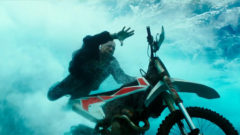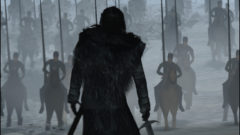
A special shout-out to Art of VFX and VFX Blog for featuring two of our amazing Supervisors on Rogue One: A Star Wars Story.
Art of VFX interviewed Previs/Postvis Supervisor Margaux Durand-Rival and VFX Blog interviewed Previs/Postvis Supervisor Barry Howell.
Read a couple excerpts below!
Art of VFX: Which sequence was the most complicated?
Margaux Durand-Rival: We had a few tricky sequences, like the Jedha Destruction scene, but one of the most complicated was the Space Battle, as we had to provide a lot of possible coverage for virtual camera. The virtual camera is a device that allows directors to be “inside” a computer-generated environment and to frame the action “live” exactly as they would do if they were on a real set. They look through a screen that is the size of a tablet and can orient that to look around or move around physically in the environment to choose the best point of view. To support this work, we had to create five very long chunks of animation for the different beats of the sequence in real time, with all the space battle going on and dozens of ships fighting each other, knowing that it had to look good from every possible point of view! A single change of timing for one event, and it had a ripple effect on the whole scene, forcing us to adjust the timing of everything else… It is very different from working a sequence on a shot basis, where you can animate only what is in front of your camera. Because each section of animation had to be in one continuous animated scene, we had to give each scene to one artist only, which was very challenging for them!
VFX Blog: What were some of the ways the director could use previs on set, especially in terms of using it to find different POVs? What tools were used for this? What did you deliver to make these possible?
Barry Howell: One of the things [director] Gareth [Edwards] said he liked about previs was that it gives him a solid guide to reference when he gets to set and it allows him to show other departments some of his ideas in motion to bring everyone on the same page. But at the same time he also likes being able to go rogue with the camera and explore other angles while on set that may not have been visualized by drawing boards or animating previs.
To help with this, we created a new tool called Random Cam. With this, we could take any previs shot, select a few points of interest, prioritize them and set a boundary area for the camera to move around in. From there, the tool could auto-generate hundreds of new and unique viewpoints based on the criteria we had established. Some angles produced by the tool would be complete rubbish, but there were always others that Gareth would like.

